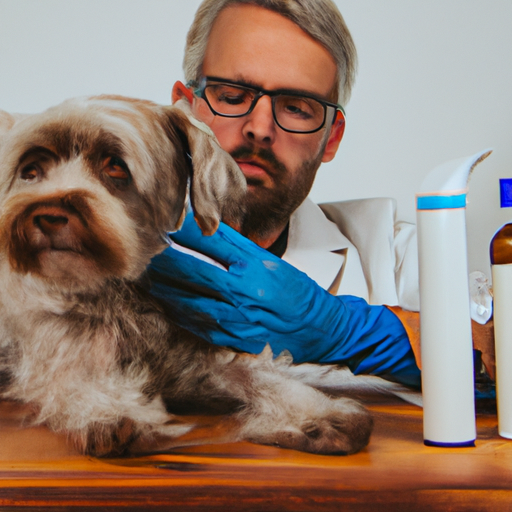Understanding Dog Allergies
Just like you, your furry friend can suffer from allergies too. These allergies can manifest in various ways, such as skin irritation, digestive issues, or respiratory distress, making your dog uncomfortable.
Dog allergies can be categorized into three main types:
- Food Allergies: These are reactions to certain ingredients in your dog’s diet.
- Contact Allergies: These occur when your dog’s skin comes into contact with an allergen.
- Inhalant Allergies: These are reactions to airborne allergens, such as dust mites or pollen.
Recognizing the Symptoms of Allergies in Dogs
To identify whether your dog is dealing with allergies, you need to look out for these signs:
- Constant scratching or licking
- Red, inflamed skin
- Sneezing, coughing, or wheezing
- Vomiting or diarrhea
Remember, these symptoms can also be indicative of other health issues. Therefore, it’s crucial to consult with a vet for an accurate diagnosis.
Testing Dogs for Allergies
Testing your dog for allergies involves different methods depending on the type of allergy suspected.
-
Elimination Diet: For food allergies, an elimination diet is usually recommended. This involves feeding your dog a special diet for a certain period and gradually reintroducing potential allergens to see if symptoms reappear.
-
Intradermal Skin Testing: For assessing contact and inhalant allergies, your vet may perform intradermal skin testing. This process involves injecting small amounts of potential allergens under your dog’s skin and observing the reactions.
Here’s a simple table to illustrate these methods:
| Allergy Type | Testing Method |
|---|---|
| Food | Elimination Diet |
| Contact/Inhalant | Intradermal Skin Testing |
Treating Dog Allergies
Once the allergens have been identified, the next step is to manage and treat the allergies. This can involve:
- Changing your dog’s diet
- Regularly cleaning your living environment to eliminate allergens
- Administering medication prescribed by your vet
Preventing Dog Allergies
Prevention is always better than cure. While it’s impossible to completely prevent allergies, you can take steps to minimize your pet’s exposure to allergens.
- Regular grooming
- Use of hypoallergenic dog products
- Providing a balanced diet
Frequently Asked Questions (FAQs)
Q: Can dogs be allergic to humans?
A: Yes, though it is rare, dogs can be allergic to human dander.
Q: Are dog allergies seasonal?
A: Some can be. Dogs can suffer from seasonal allergies caused by pollen or mold.
Q: Can dog allergies be cured?
A: While there’s no outright cure, allergies can be managed effectively to ensure your dog leads a comfortable life.
Q: How long does it take for an elimination diet to work?
A: It can take anywhere from 6 to 12 weeks.
Remember, as a caregiver, your role involves more than just meeting your dog’s basic needs. It’s about understanding their health and doing everything you can to ensure they lead a comfortable and healthy life. This includes being vigilant about potential allergies and taking appropriate action when needed.



